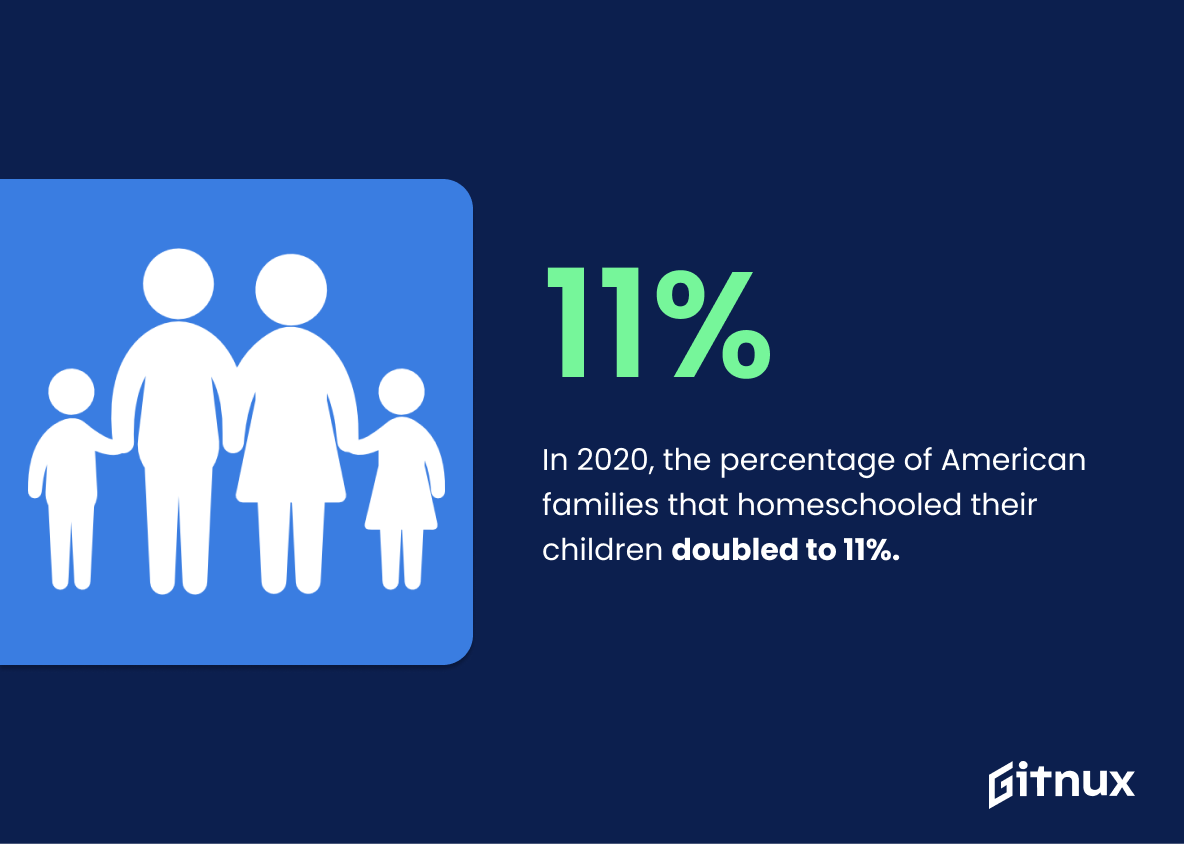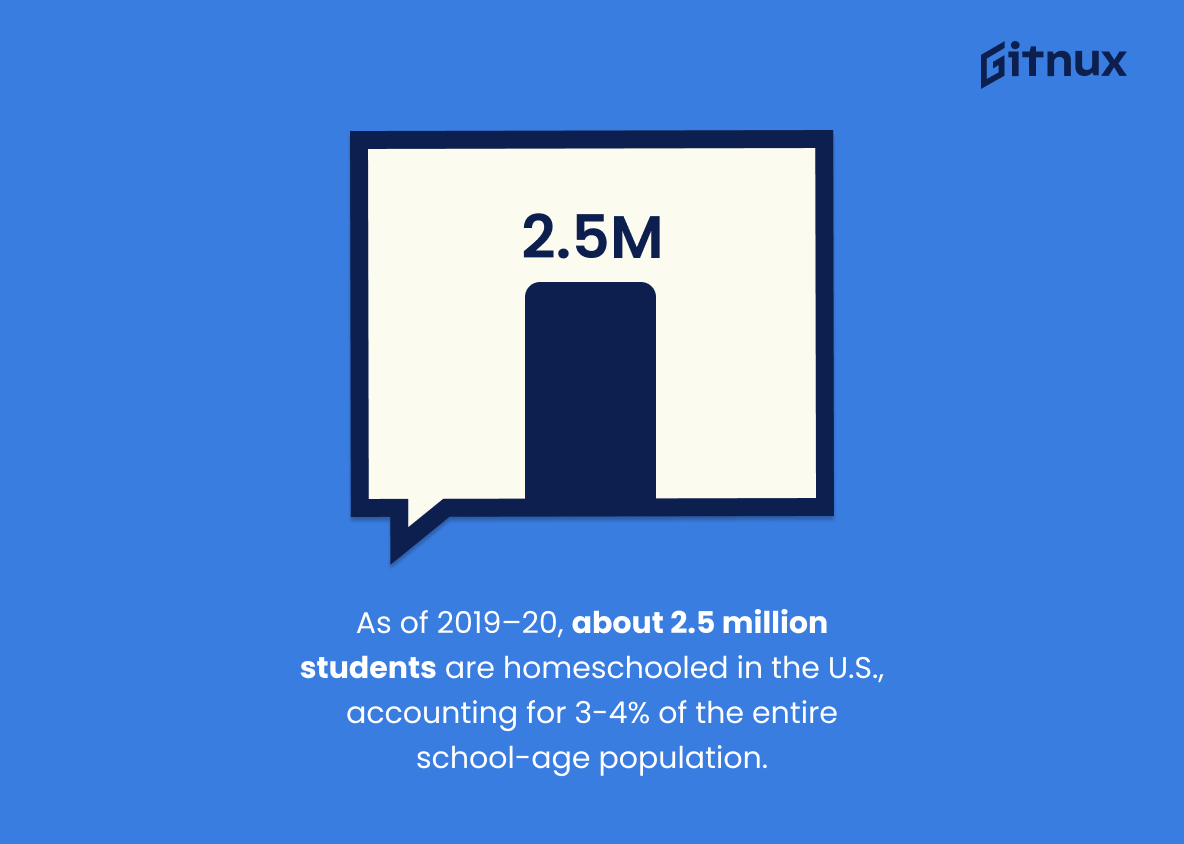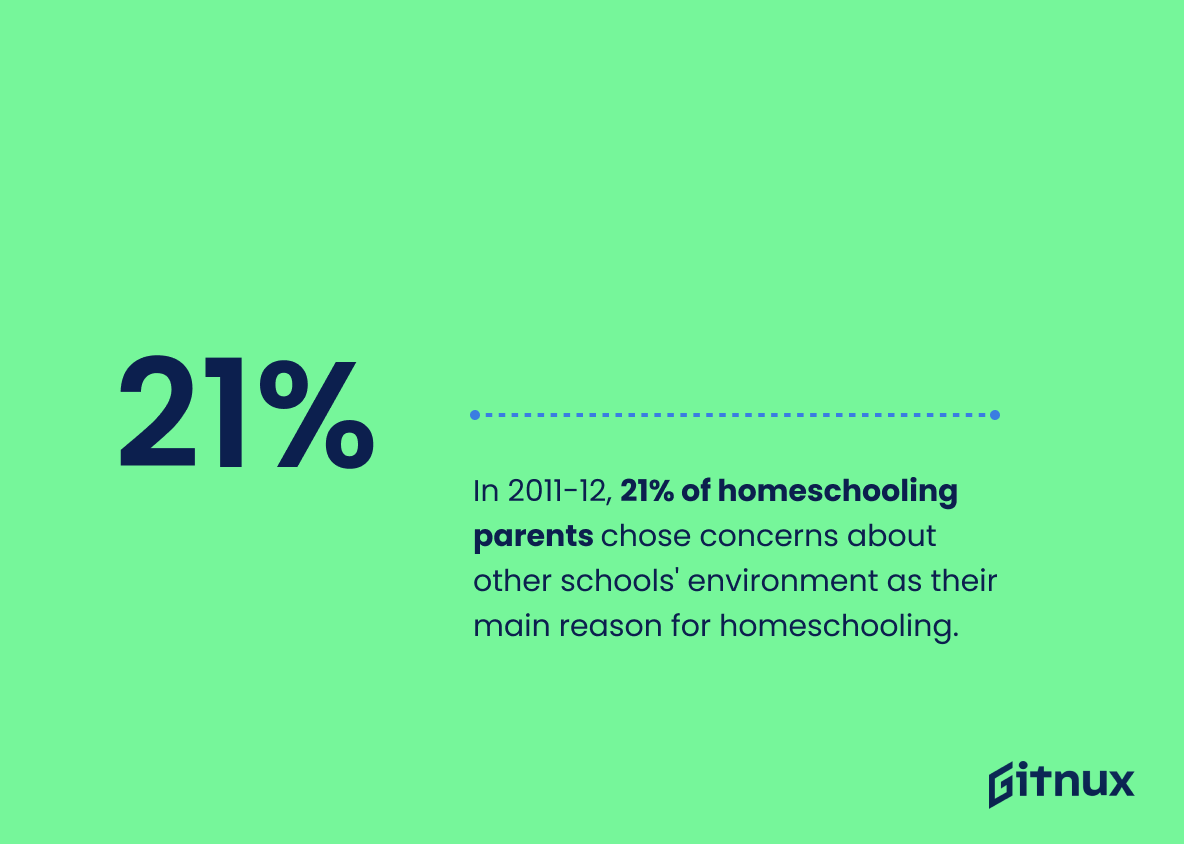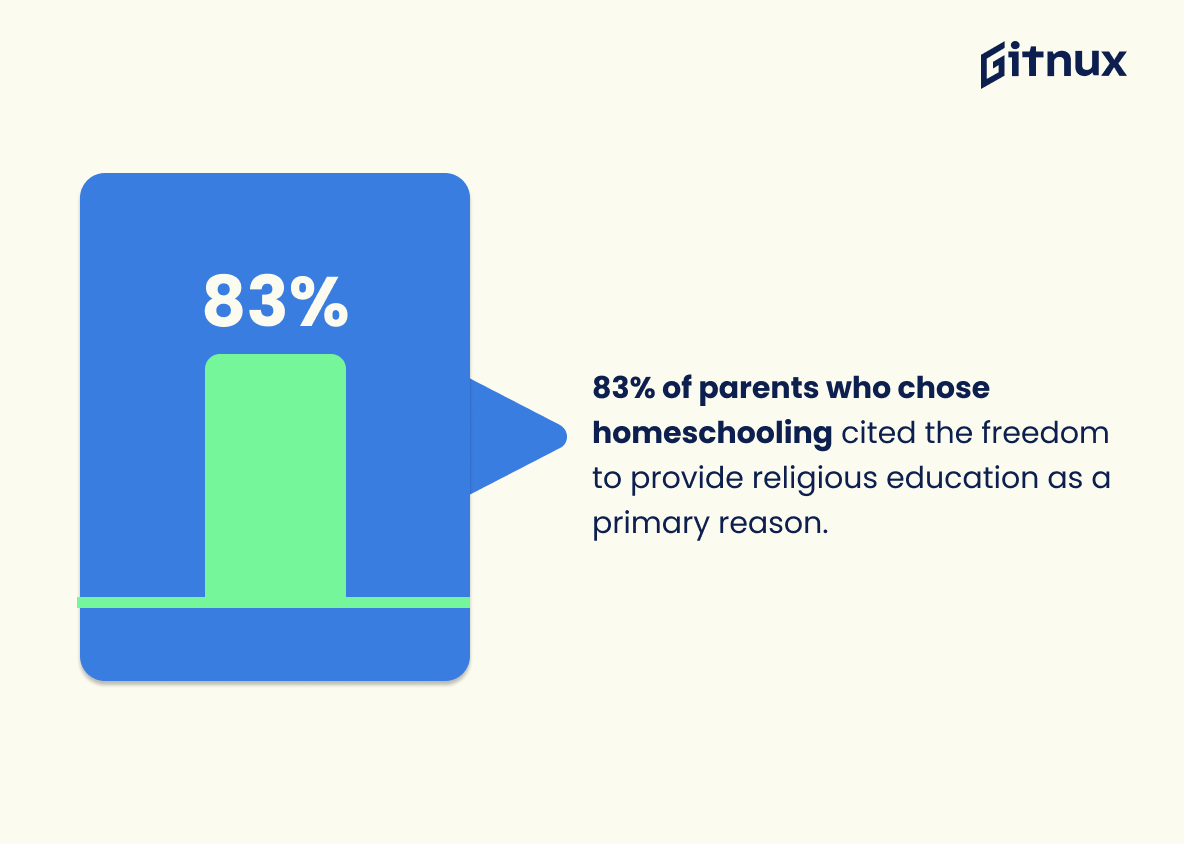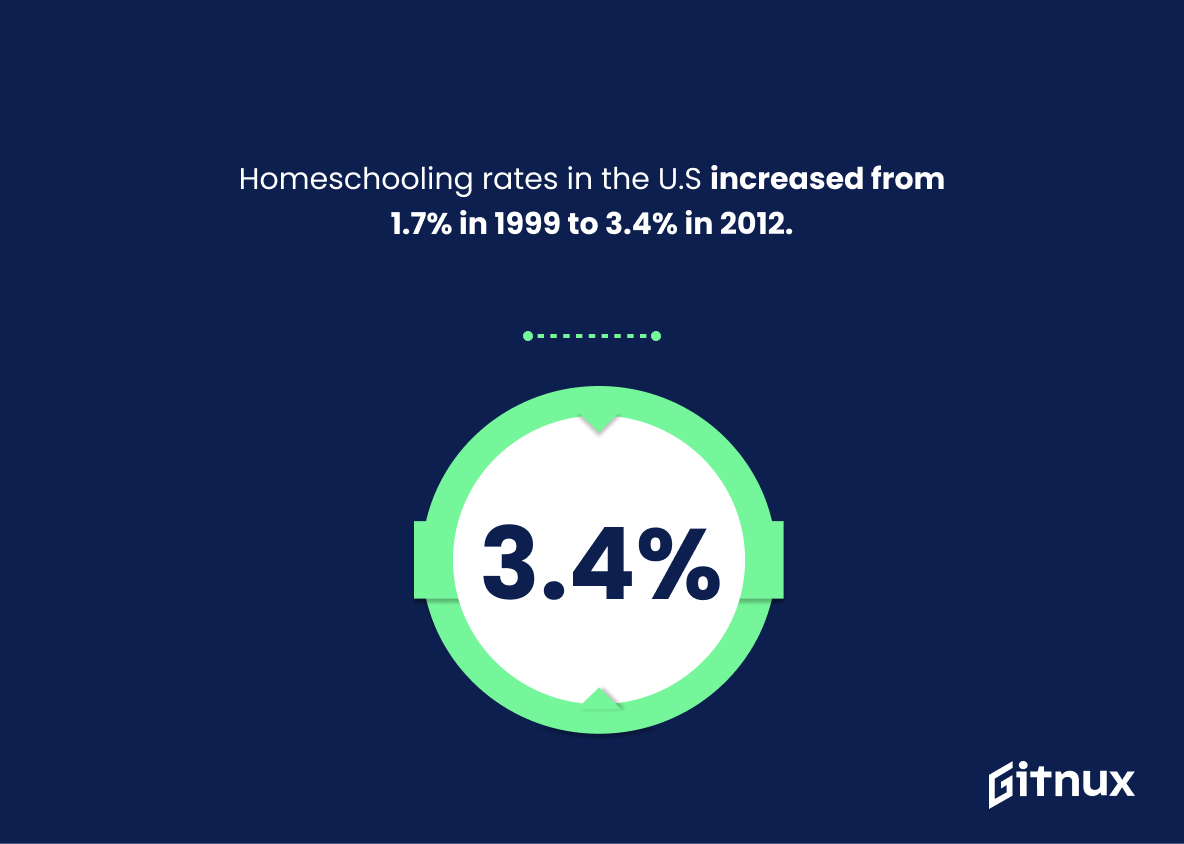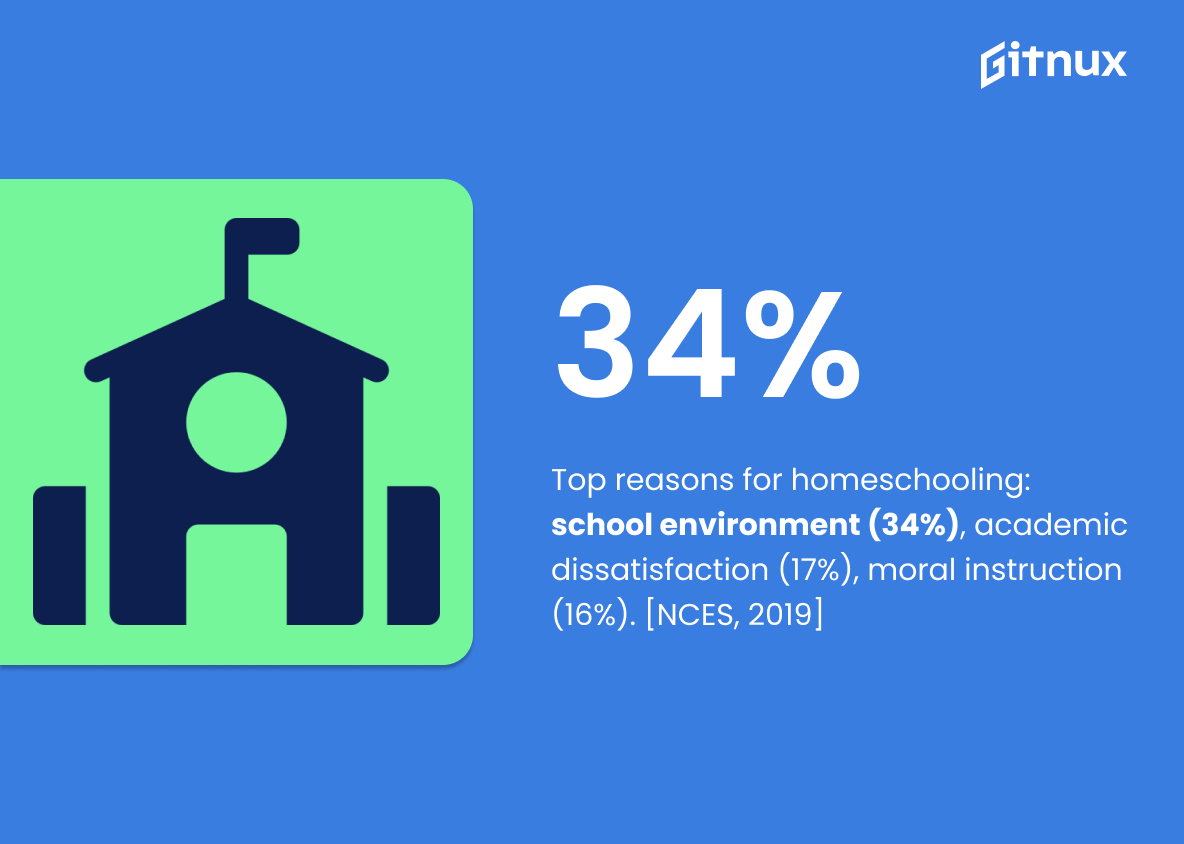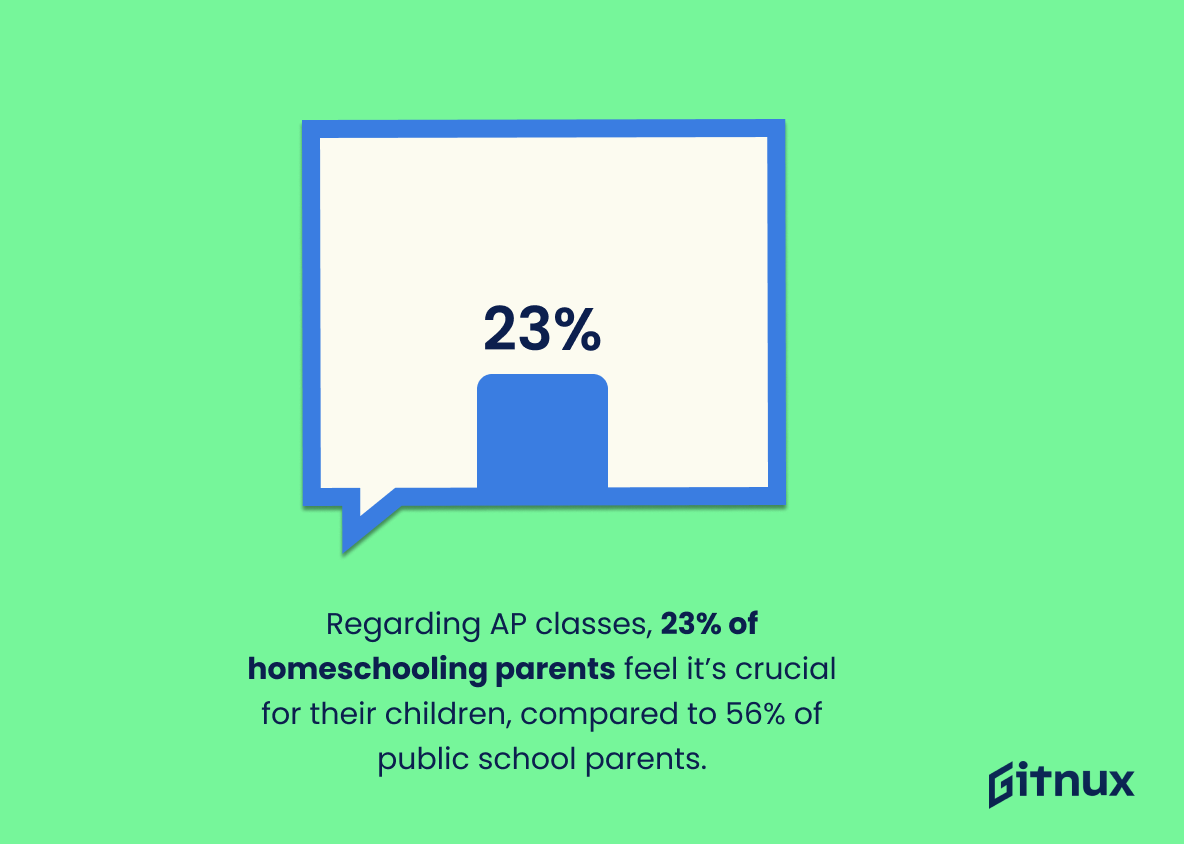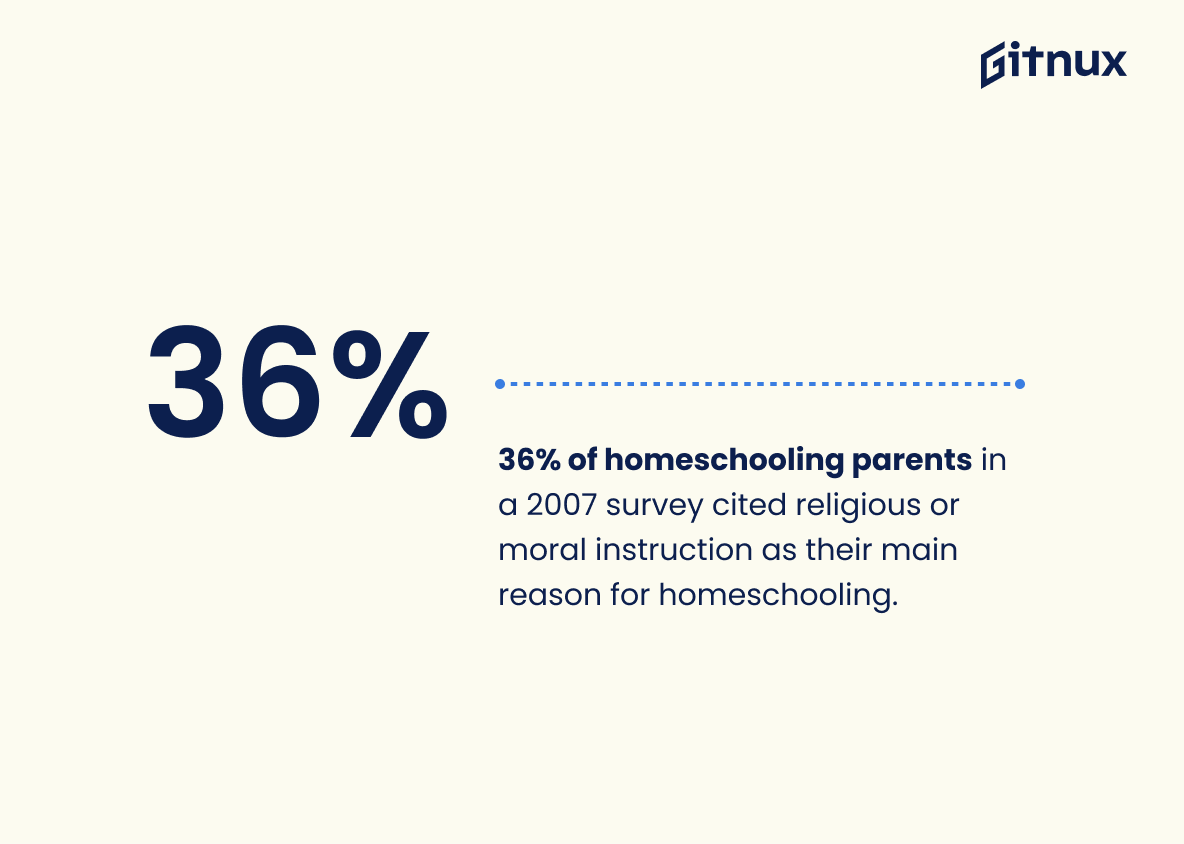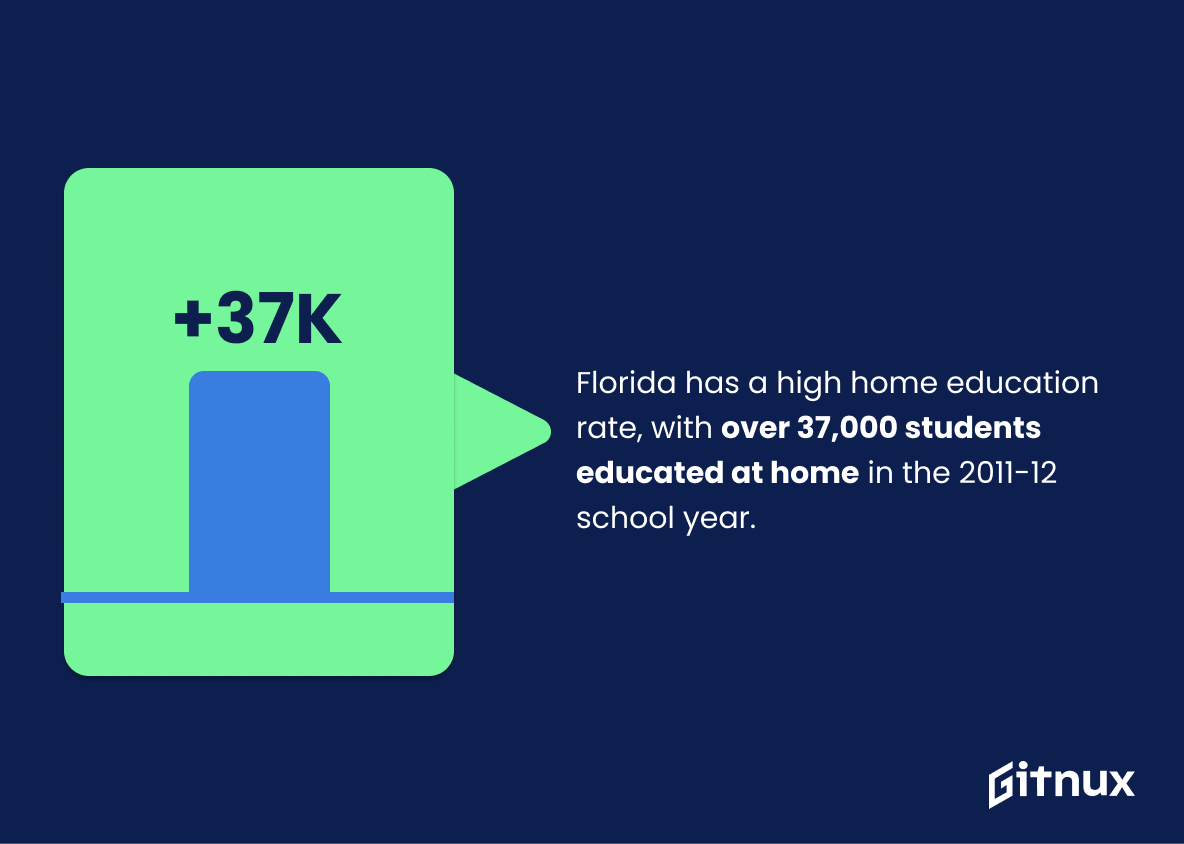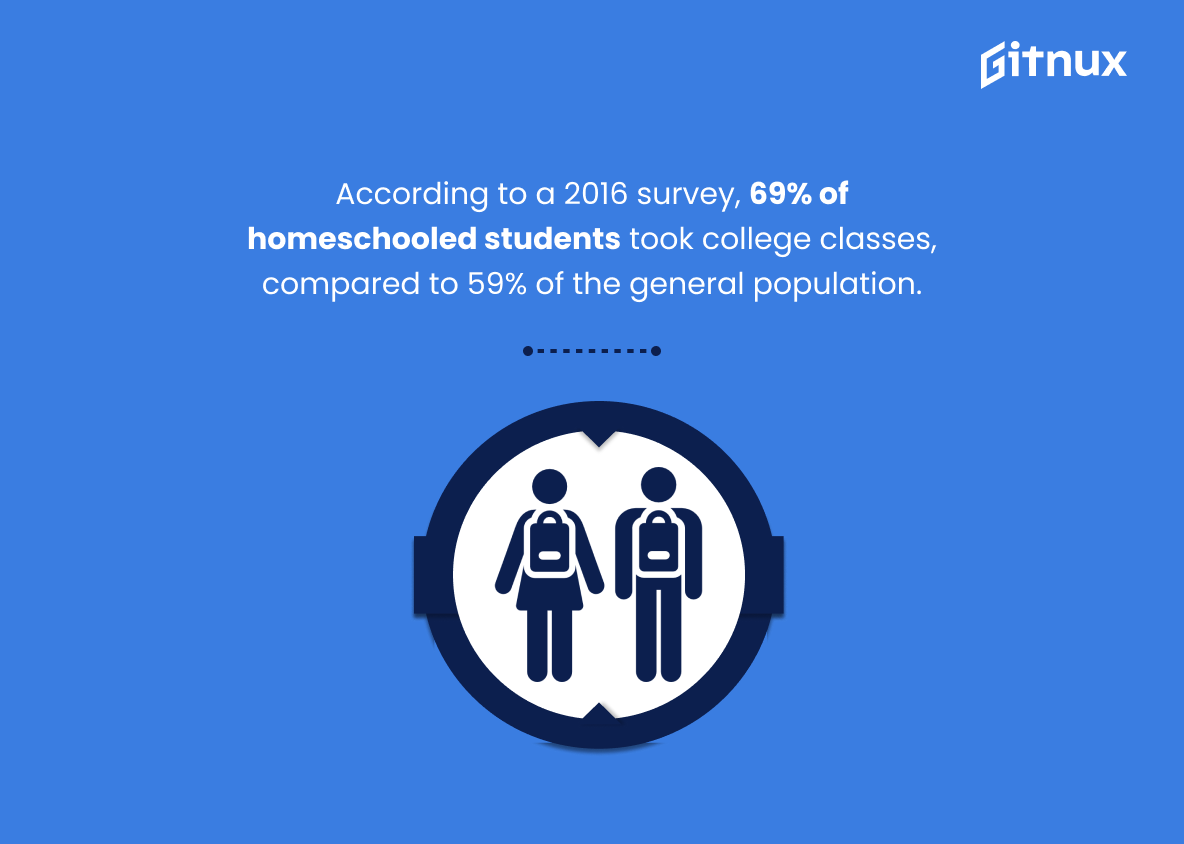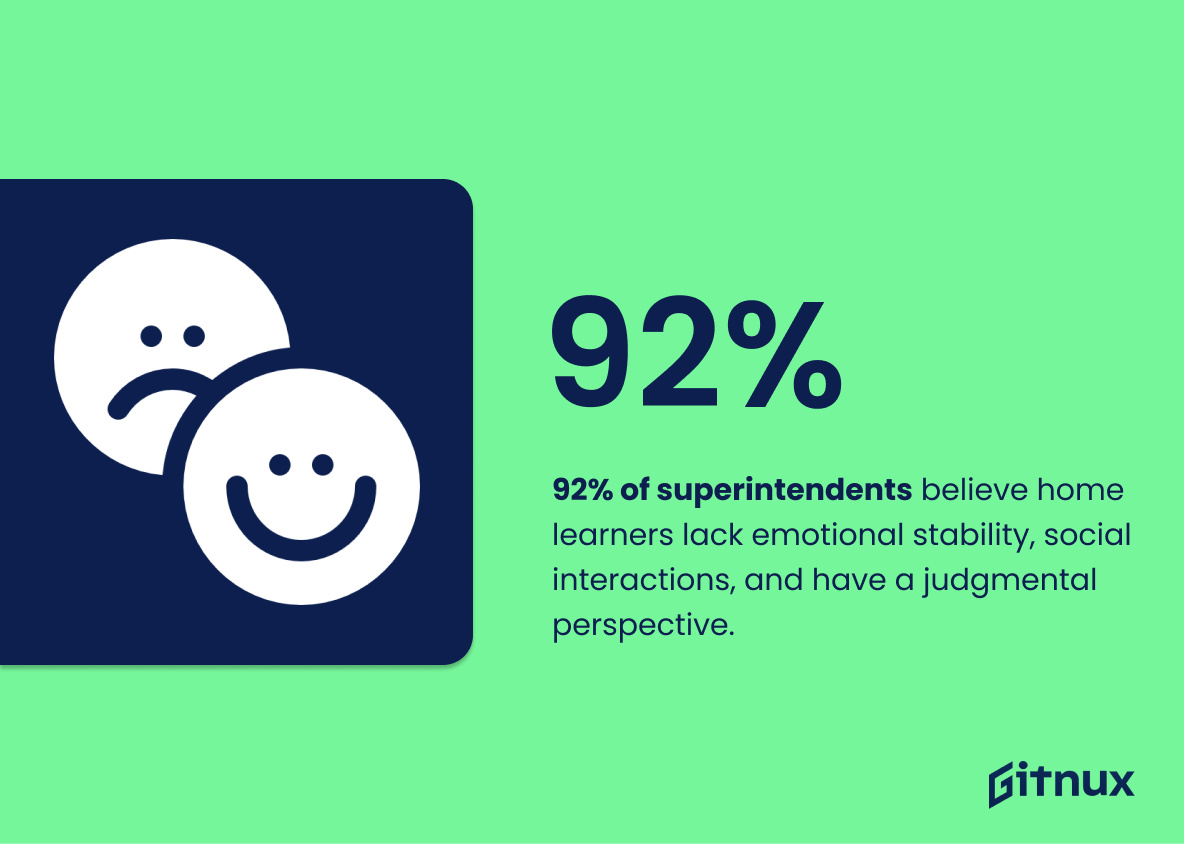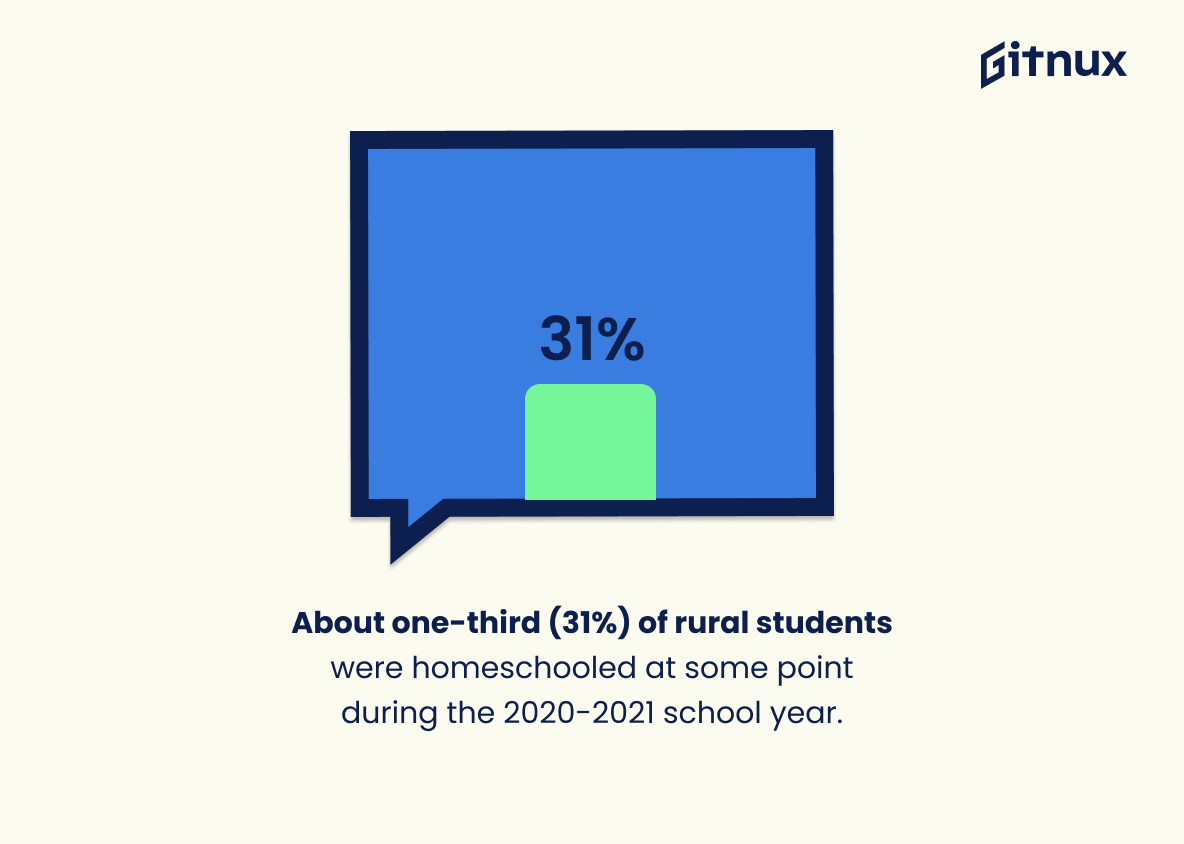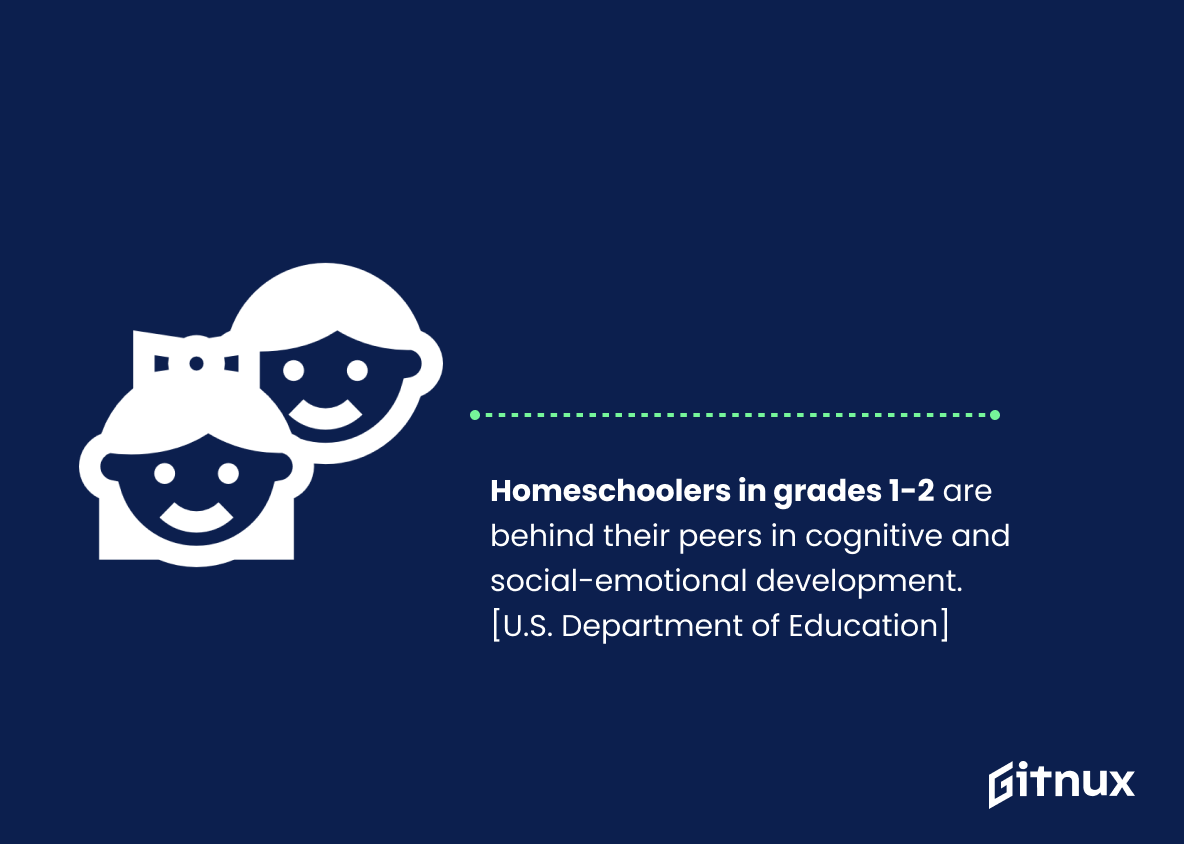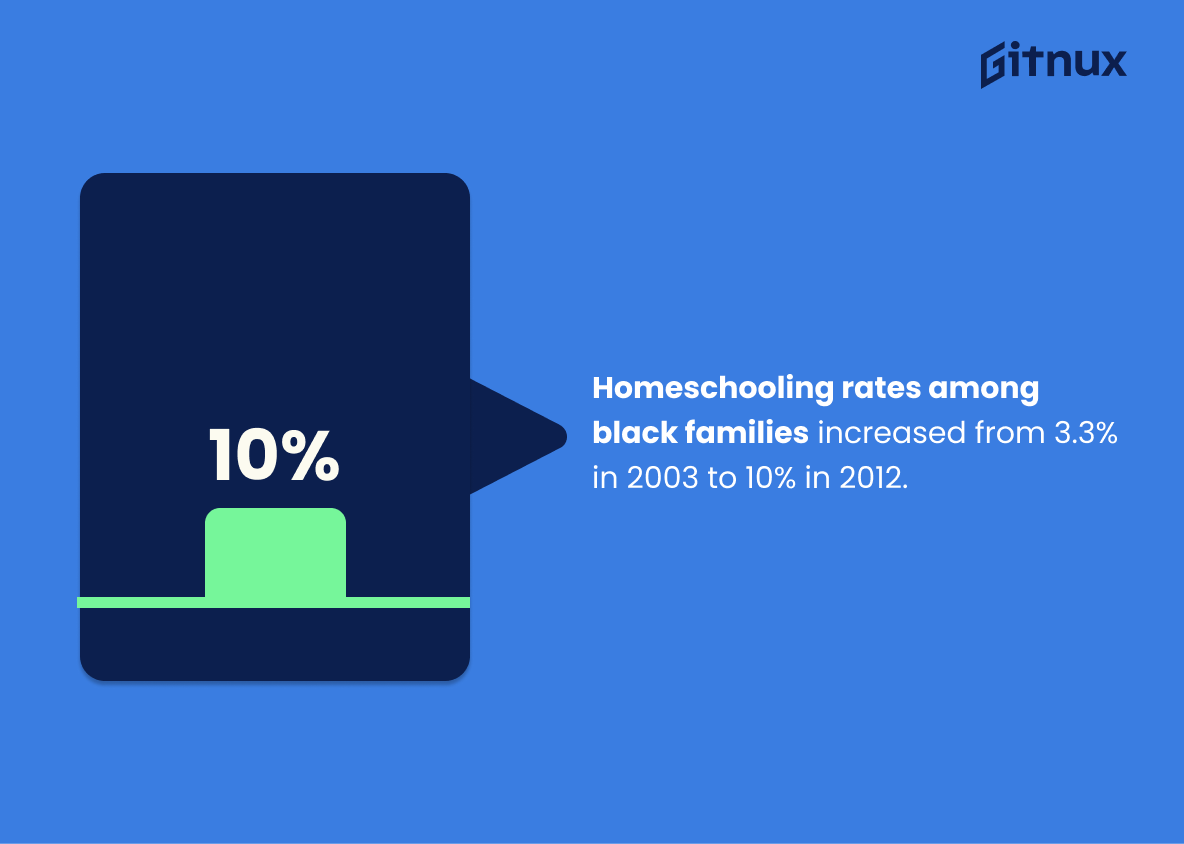Navigating today’s educational landscape can often feel like traversing an intricate maze. For an increasing number of families, homeschooling has emerged as a preferred path, providing a tailored and flexible education alternative. From reasons backing this choice to the methods being employed, this shift in perspective has led to a fascinating array of homeschool statistics which serve as illuminating indicators of its rising popularity. This blog post ventures into the compelling facts and figures surrounding homeschooling, delivering a comprehensive review of the intriguing world of at-home learning.
The Latest Homeschool Statistics Unveiled
In 2020, the percentage of American families that homeschooled their children doubled to 11%.
The surge to a striking 11% of American families embracing homeschooling in 2020 throws a spotlight on a significant trend reshaping America’s education landscape. This percentage, having doubled from previous years, not only underscores the dramatic transformation of schooling preferences but also provides a crucial gauge for understanding the increasing attraction of homeschooling. In dissecting this homeschooling statistic, our blog post will illuminate the intricacies of this phenomenon, scratch below the surface of the ‘why’, and forecast the future trends of this shift in educational choices.
As of the school year 2019–20, about 2.5 million students are homeschooled in the U.S., accounting for 3-4% of the entire school-age population.
In the contained universe of a school year, namely 2019-2020, we discover an intriguing education anomaly. Roughly 2.5 million students across the great expanse of the United States have chosen a path less trodden; they are nurtured with knowledge within the comfort of their own homes. This equates to a modest but noteworthy 3-4% of the entire school-age population, casting a spotlight on the homeschooling movement. This noteworthy datapoint underscores the evolving dynamics of education in a society increasingly eschewing the standard one-size-fits-all model, highlighting instead the recognition and value of customizable, individual-based learning strategies.
In the 2011–12 school year, homeschooling families most frequently selected a concern about the environment of other schools (21% of parents) as their reason for homeschooling.
Grasping the reasons behind the surge in homeschooling can enrich our understanding greatly, and this particular statistic offers compelling insights. From the lens of the 2011–2012 academic year, it appears a significant proportion (21%) of homeschooling families were primarily driven by concerns about the environment in other schools. Attuned to this nuance, we can now see schooling choice isn’t limited to academic considerations but deeply intertwined with environmental factors. It frames an essential narrative for our exploration of homeschooling statistics and adds a layer of complexity to the larger discussion, validating parental concerns as legitimate drivers for alternate education paths.
83% of parents who chose homeschooling cited the freedom to provide religious education as a primary reason.
Delving into the heart of homeschooling motivations, an intriguing discovery emerges: 83% of parents opting for this route point to the liberation it offers to incorporate religious education as a fundamental reason. This percentage is no small fraction, revealing a significant intersection between home education choices and faith-based instruction desires. Thus, when discussing homeschool statistics, one can’t simply ignore the immense influence of religious freedom, an underlying force sculpting the homeschooling landscape to a considerable extent.
Homeschooling rates in the U.S increased from 1.7% in 1999 to 3.4% in 2012.
Delving into the realm of homeschooling trends, an illuminating number leaps to the foreground – a rise from 1.7% in 1999 to 3.4% in 2012 in U.S. homeschooling rates. A subtle, yet powerful, shift in the educational landscape, shining a spotlight on the seismic changes happening within the domestic sphere. This spectral of growth mirrors a substantially deepened embrace of homeschooling, a conviction that fewer and fewer parents are considering this form of education as a fringe consideration. In the broader context of homeschool statistics, our journey beginning in the year 1999 and culminating in 2012 sheds empirical light, showcasing the evolvement and expanding coverage of this educational option. It unveils a story not just about parents seeking more control over their child’s education, but also the broader community’s growing acceptance of diverse educational paths.
According to a 2019 data by NCES, the top reasons for homeschooling were concern about a school’s environment (34%), dissatisfaction with academic instruction (17%), and a desire to provide moral instruction (16%).
This vivid piece of statistic resonates like a lighthouse in the swirling sea of homeschooling trends. It unveils the intimate motivations behind why an increasing number of parents across the U.S. are opting for this non-traditional form of education. The revelations are intriguing: the number one worry is not about academic acuity, but rather school environment. This indicates that the social or safety facets of conventional schools are causing unease among the parent community.
Yet, the surge of dissatisfaction with academic instruction, accounting for 17% of reasons, cannot be relegated to the sidelines. It points to a growing mistrust in the current education system’s ability to enlighten young minds effectively.
Moreover, a desire to instill sturdy moral values is no small consideration, reflected by the 16% trove who engage in homeschooling primarily to infuse the right virtues in their children. This insight brings into focus the intricate role homeschooling assumes in character-rearing and moral guidance.
All of these elements together make this 2019 statistic a vital compass in navigating the macrocosm of parental preferences and concerns in choosing homeschooling. The findings underscore the grassroots dynamics steering the homeschooling phenomenon, shedding eloquent light on the intricate web of considerations that impact educational choices in contemporary society.
Regarding AP classes, 23% of homeschooling parents feel it’s crucial for their children, compared to 56% of public school parents.
In the world of homeschooling discourse, the given statistic wields its influence subtly. It serves as a window into the contrasting perspectives between homeschooling and public school parents concerning AP classes, shaping the foundation of an analytical discussion. The variance between the 23% of homeschooling parents and the 56% of public school parents who view these classes as critical, beckons readers to interrogate the driving forces behind these attitudes. This statistic invokes a comparative analysis of the value parameters that both parent groups set for education, thereby embellishing our understanding of homeschooling in a broader context.
In a 2007 survey, 36% of homeschooling parents cited the ability to provide religious or moral instruction as the most important reason for homeschooling.
In the vast world of homeschooling, a 2007 survey unveils a fascinating insight into the motivations driving parents’ decisions. With a significant 36% citing the ability to provide religious or moral instruction as the pivotal reason for choosing homeschooling, we encounter a unique perspective. This slice of data offers a potent lens to explore the diverse, often under-recognized motivations fueling the homeschooling trend. It paints a vivid picture of the pursuit of personalized, value-driven education that extends beyond traditional academic goals. This revelation could potentially prompt a more profound discussion about the flexibility and customization that homeschooling permits, further enriching the discourse in the Homeschool Statistics blog post.
Florida has one of the highest home education rates in the U.S., with over 37,000 students home educated in the 2011-12 school year.
Illuminating the relative popularity of home education in different states, this particular statistic uncovers a noteworthy trend in Florida, the state with one of the highest rates of homeschooling. With a staggering figure of over 37,000 students being homeschooled in the2011-12 school year, it tears open a fascinating pathway for discussion about variables that influence homeschooling rates in various regions. Furthermore, it provides an essential starting point of conversation in our blog post as it directly highlights the prevalent practice of home education.
In a 2016 homeschooling outcome survey, 69% of homeschooled students completed at least some college classes, compared to 59% of the general population.
This intriguing statistical insight from 2016 breaks the ground, highlighting the pivotal role homeschooling plays in students’ pursuit of higher education. While judging the credibility of homeschooling, this percentage — 69% of homeschooled students completing some college classes in contrast to 59% of the general population — serves as a compelling testament to homeschooling’s effectiveness. It does not just demystify the prevalent stigma around homeschooling but also underlines its potential in shaping academically successful individuals. In the course of articulating homeschooling statistics, this particular bit of data adds substance, reinforcing the argument with solid, empirical evidence.
92% of superintendents believe that home learners are emotionally unstable, deprived of social interactions, and too judgmental of the world around them, a fact showing severe opposition from traditional school authorities.
In the vast ocean of data revolving around home education, this particular statistic serves as a lighthouse, illuminating the attitude of school superintendents towards home learners. The fact that a staggering 92% of them perceive home learners as emotionally unstable, socially deprived, and excessively critical of the world is an indisputable testimony of the stark contrast between traditional school authorities and home education proponents. Forming the backbone of a blog post on homeschool statistics, this data point not only bathes in a spotlight the potential challenges faced by home learners as perceived by educational authorities, but also tacitly calls for a reassessment of these stereotypical perceptions and misconceptions. It fosters an environment for dialogue, understanding, and change, making it a crucial component in discussions about home education.
Homeschooling is common in rural areas. About one-third (31%) of rural students were homeschooled at some point during the 2020-2021 school year.
Shining a spotlight on this intriguing data point reveals the fascinating trend that approximately a third of rural students were homeschooled in the 2020-2021 academic year. This nugget of information is not just mere numbers but keys to understanding how education structures differ in less urbanized regions. This statistic shades light on the educational preferences and choices made by families residing in the countryside, perhaps due to circumstances unique to them. In the grand puzzle of homeschooling trends, this particular statistic is a significant piece, enriching the overall portrait of the homeschooling landscape. With this, we can better decipher the reasons, patterns, and impacts of homeschooling, especially in rural communities.
According to the U.S. Department of Education, children in grades 1-2 who are homeschooled are behind their peers in cognitive and social-emotional development.
Highlighting trends observed by the U.S. Department of Education, the statistic referring to the comparative development of children in grades 1-2 paints a critical portrait of homeschooling’s potential pitfalls. Not merely an isolated number, this data point tugs at the fabric of the broader homeschooling narrative. In the grand scheme of homeschool statistics, it imparts the message that while homeschooling may afford flexibility, it could potentially lag in fostering robust cognitive growth and social-emotional development. Drawing parents’ attention to these possible shortcomings empowers them to make more informed educational decisions or take steps to address these areas if they choose homeschooling for their children. Thus, this statistic forms an essential pillar in the homeschooling statistics landscape, providing a balanced viewpoint and enriching the blog post’s overall discourse.
Homeschooling rates among black families increased from 3.3% in 2003 to 10% in 2012.
In the sphere of homeschooling statistics, observing a tripling rise in the homeschooling rates among black families between 2003 and 2012 paints an insightful picture. Undeniably, it underscores a gripping shift in educational preferences within this demographic. This ripple effect signals an increased trust in the homeschooling approach and suggests a transformative power in the lens through which black families view formal educational systems. Such pivotal trends urge us to further investigate underlying reasons, be it the quest for more culturally relevant curricula or the desire for a more secure learning environment, making this an engaging conversational pivot for any discourse around homeschooling statistics.
Conclusion
In wrapping up, the escalating homeschooling statistics tell us one thing: an increasing number of parents are seeking an alternative, flexible, and personalized means of education for their children. They believe homeschooling can meet individual educational needs more effectively. While homeschooling may not be suitable for everyone, there is no denying its growing popularity and success. Ultimately, these numbers reveal a broader perspective conducive to understanding the shift in educational trends and thresholds. Future developments in homeschooling will continue to be of great interest, given its potential to redefine the educational landscape.
References
0. – https://www.www.nheri.org
1. – https://www.www.fldoe.org
2. – https://www.www.pewresearch.org
3. – https://www.www.marketwatch.com
4. – https://www.www.usnews.com
5. – https://www.nces.ed.gov
6. – https://www.responsiblehomeschooling.org
7. – https://www.www.rand.org
8. – https://www.www.nHERI.org
9. – https://www.theconversation.com
10. – https://www.ies.ed.gov
